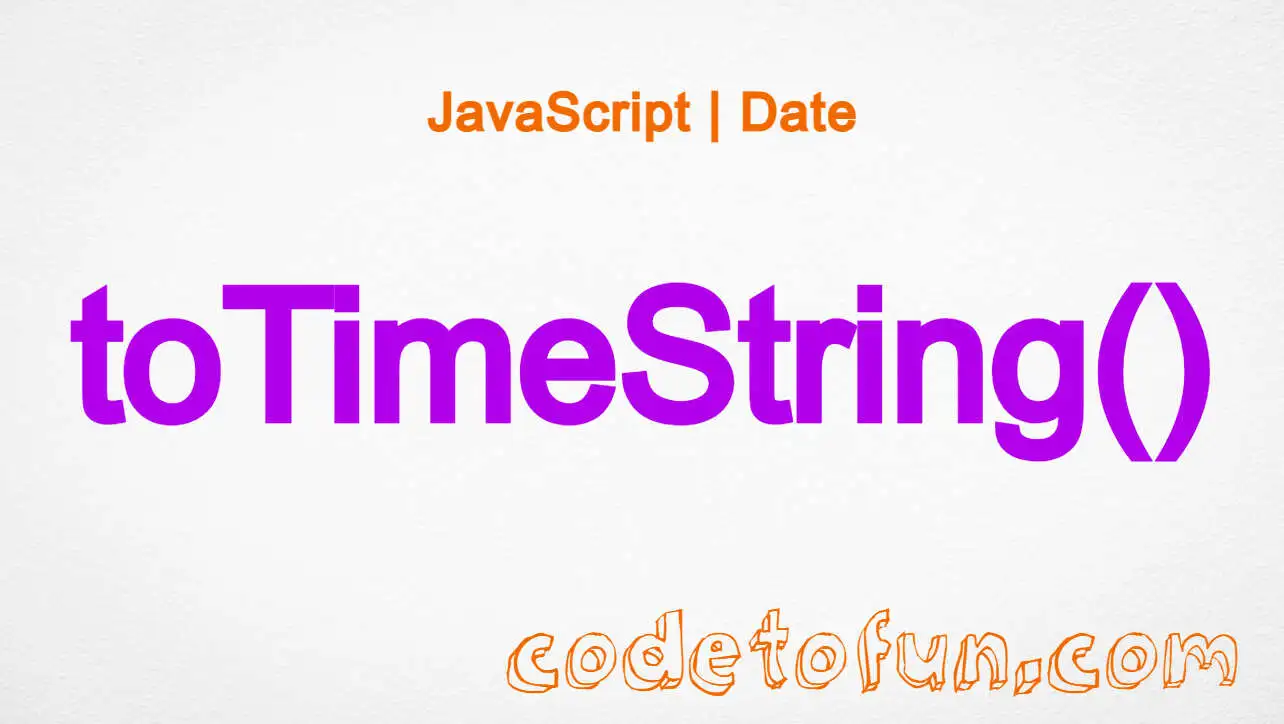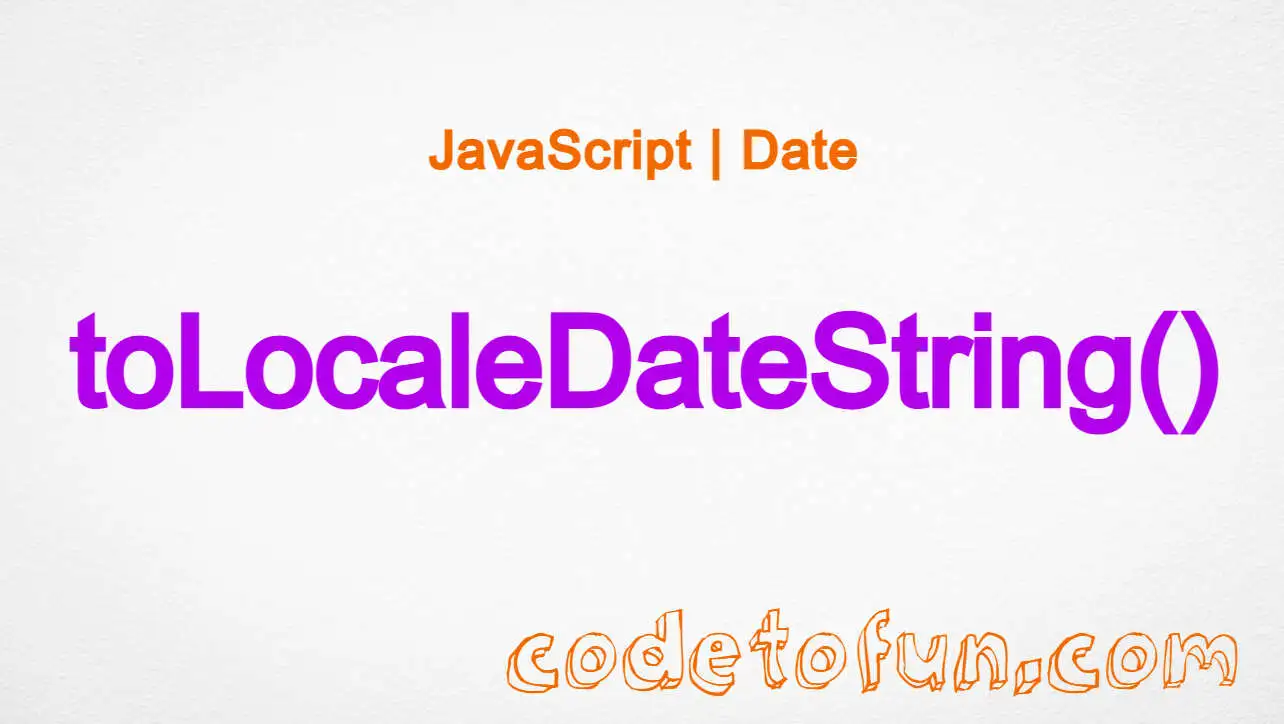
JS Date Methods
JavaScript Date toLocaleDateString() Method

Photo Credit to CodeToFun
🙋 Introduction
JavaScript provides a powerful set of tools for handling dates and times, and the toLocaleDateString() method is a crucial part of that toolkit. This method allows you to obtain a localized string representation of a date, accommodating various date and time formats based on the user's locale.
In this guide, we'll delve into the toLocaleDateString() method, exploring its syntax, usage, best practices, and practical examples.
🧠 Understanding toLocaleDateString() Method
The toLocaleDateString() method is part of the JavaScript Date object and is used to retrieve a string representing the date portion of the object in a format appropriate to the specified locale. It provides flexibility in displaying dates based on the user's language and region.
💡 Syntax
The syntax for the toLocaleDateString() method is straightforward:
dateObj.toLocaleDateString([locales[, options]]);- dateObj: The Date object for which you want to obtain the localized date string.
- locales (Optional): A string with a BCP 47 language tag or an array of such strings that represents the locales.
- options (Optional): An object with configuration options for the formatting, such as weekday, year, month, day, etc.
📝 Example
Let's dive into a simple example to illustrate the usage of the toLocaleDateString() method:
// Create a Date object
const today = new Date();
// Using toLocaleDateString() to get a localized date string
const localizedDate = today.toLocaleDateString('en-US', { weekday: 'long', year: 'numeric', month: 'long', day: 'numeric' });
console.log(localizedDate);In this example, the toLocaleDateString() method is used to obtain a string representation of the current date in a long format, including the weekday, month, day, and year.
🏆 Best Practices
When working with the toLocaleDateString() method, consider the following best practices:
Handle Time Zones:
Be mindful of time zones, especially if your application involves users from different regions. If time zone awareness is crucial, consider using the toLocaleString() method with the timeZone option.
example.jsCopiedconst dateOptions = { timeZone: 'America/New_York', weekday: 'long', year: 'numeric', month: 'long', day: 'numeric' }; const dateInNY = today.toLocaleDateString('en-US', dateOptions); console.log(dateInNY);Fallback Locales:
Provide fallback locales to ensure a good user experience even if the preferred locale is not supported.
example.jsCopiedconst supportedLocales = ['en-US', 'es-ES']; const userLocale = getUserLocale(); // Your function to determine user's preferred locale const localeToUse = supportedLocales.includes(userLocale) ? userLocale : 'en-US'; const formattedDate = today.toLocaleDateString(localeToUse, { weekday: 'long', year: 'numeric', month: 'long', day: 'numeric' }); console.log(formattedDate);
📚 Use Cases
Displaying Birthdays:
The
toLocaleDateString()method is handy for displaying birthdays in a user-friendly format based on the user's locale:example.jsCopiedconst birthday = new Date('1990-05-15'); const formattedBirthday = birthday.toLocaleDateString('en-US', { month: 'long', day: 'numeric' }); console.log(`Happy Birthday on ${formattedBirthday}!`);Meeting Scheduler:
In a meeting scheduler application, you can use
toLocaleDateString()to display meeting dates in a way that aligns with each participant's locale:example.jsCopiedconst meetingDate = new Date('2024-03-01T14:30:00'); const participantLocales = ['en-US', 'fr-FR', 'es-ES']; for (const locale of participantLocales) { const formattedMeetingDate = meetingDate.toLocaleDateString(locale, { weekday: 'long', year: 'numeric', month: 'long', day: 'numeric', hour: 'numeric', minute: 'numeric', hour12: true }); console.log(`Meeting in ${locale}: ${formattedMeetingDate}`); }
🎉 Conclusion
The toLocaleDateString() method provides a flexible way to present dates in a localized format, enhancing the user experience across diverse regions.
By adhering to best practices and exploring diverse use cases, you can harness the full potential of the toLocaleDateString() method in your JavaScript projects.
👨💻 Join our Community:
Author

For over eight years, I worked as a full-stack web developer. Now, I have chosen my profession as a full-time blogger at codetofun.com.
Buy me a coffee to make codetofun.com free for everyone.
Buy me a Coffee












If you have any doubts regarding this article (JavaScript Date toLocaleDateString() Method), please comment here. I will help you immediately.